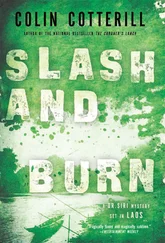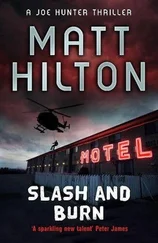That was the worst thing that had happened to me up until then—or since. Todd was my best friend and he was gone. It didn’t end there. When we went up to San Francisco for the funeral, I had to deal with finger-pointing from Todd’s obviously distraught family and the guys in his band—everyone thought that his death was my fault. Todd’s stepbrother was friends with Del James—he knew me and even he thought I was to blame. It got very ugly. Todd’s family even hired a private investigator to check me out for a while; so on top of the mourning, an unjust black cloud of accusation followed me around, while I’d been the one in the end who had done everything possible to keep Todd alive.
It was a hell of a wake-up call: not only had I come face-to-face with the realities of the voracious lifestyle I lived, but I also learned that by living so overtly I would always be an easy target—even to those I trusted—those who knew me the best of all.

I can say one thing about the “musical highlights” of 1987, it’s that they were more stereotypically eighties to me than the entire decade put together. In 1987, Bon Jovi’s “Livin’ on a Prayer” spent February 14 through March 7 at number one—more weeks than any other single that year. In 1987, Whitney Houston became the first female solo artist to have an album debut at number one. Robert Palmer took home the Grammy for Best Rock Vocal Performance for “Addicted to Love” and the Eurythmics took home the Grammy for Best Rock Performance by a Group for “Missionary Man.”
Dirty Dancing and Three Men and a Baby were the big movies of that year and every song that came on the radio was saccharine and over-produced: Madonna’s “Who’s That Girl?,” Peter Gabriel’s “Big Time,” Steve Winwood’s “Back in the High Life Again.” The music industry was full of other bad ideas in 1987: compact discs were already out, but the powers that be decided that “cassette singles” were the future—and launched that format with a Bryan Adams track called “Heat of the Night” that withstood the test of time just about as well as cassette singles did.
As for straight-ahead hard rock in 1987, Aerosmith made their comeback with Permanent Vacation, but other than “Rag Doll” and “Dude (Looks Like a Lady),” the songs most played on the airwaves were nothing but the weak and weaker. There was Whitesnake’s “Here I Go Again,” Heart’s “Alone,” Great White’s “Once Bitten,” and Billy Idol’s cover of “Mony Mony.” And somewhere between the two there we were: neither Guns N’ Roses nor Appetite for Destruction fit into any preexisting niche in the musical landscape of 1987. As much as we’d “made it,” it was the same as it ever was: we had to build a space of our own.
A ppetite for Destruction was released on July 21, 1987, to little or no fanfare at all. To be kind, I’ll say that it was a hit on the underground circuit; it had a small cult following, transmitted by word of mouth, like Metallica’s Kill ’em All . We found early fans in The Cult after their lead singer, Ian Astbury, saw us play at the Marquee in London; later on he told me that he knew immediately that we’d be huge. He got us signed up as the opening band on a two-month leg of their North American tour in support of Electric .
That album was produced by Rick Rubin and was a major departure from The Cult’s Goth-influenced roots. It made sense that they’d want a hard-rock band like ours supporting them because Electric sounded like it was recorded in 1973. The Cult had a huge worldwide audience by then, and though Electric would be the album to do it for them, they hadn’t quite hit it big in America. I was exposed to that record through the girl I was sleeping with at the time. Chicks were good for finding out what was cool at the moment—they always seemed to be up on the records of the day.
Before we took off on The Cult tour, we shot the “Welcome to the Jungle” video, which was our first. It was a two-day shoot. The first day we shot all of those little vignettes that define each of us as individual characters in the video: Axl gets off a bus, Izzy and Duff are seen out the street, etc. If you blink, you miss my appearance: I’m the drunk sitting in a doorway with the brown-bagged bottle of Jack. We shot those scenes on La Brea, outside of some little storefront that our director, Nigel Dick, had found. I was not unfamiliar with the long and arduous process of making videos: I was an extra in a Michael Schenker video for a song off his Assault Attack album in 1982.
Over the course of the evening as I waited for my call time for “Jungle,” I got plastered drunk. I found the constant cycle of “hurry up and wait” that is standard on any kind of film or video shoot so boring that by the time they were ready for my scene, it was more of a candid portrait. That video captured where I was at in that moment: a minute after the director called “Cut,” I got into a fight with our manager, Alan Niven, over what I have no idea—and neither did he. I told him off and then I wandered into the night and hitchhiked to who knows when.
The next night we shot at the Park Plaza Hotel, which was the location of Dale Gloria’s Scream Club. Dale is a local nightlife celebrity in Los Angeles who has owned and run a variety of clubs—Scream was the most legendary. That second day, yet again, was another long shoot on location, but at least we shot the band performing the song live. We made it an event: we did the song on a closed set, then we opened it up and filled the club with an audience and played it three times in a row. That was cool. And that was a wrap on our first video.
A day or two, maybe a week, later, we set off on tour with The Cult to support them during a two-month, August-and-September swing through Canada, the West Coast, and the South. That tour was great; none of the usual bullshit happened where the headliner predictably sabotages the opening band by turning down their sound so that they make that much more of an impact when they take the stage. I think The Cult had circumvented that issue by choosing us; a band from L.A. that no one had heard of. Whatever it was, there was great camaraderie among our bands. Ian and Axl got along very well and Duff and I hung out a lot with bassist Stephen “Hagus” Harris. Still, I’m not quite sure that they knew what they were getting when they hired us. One thing was for sure: this outing confirmed my passion for touring. These were meager beginnings, but they launched my enduring love affair with the road—I remain an irretrievable road dog as of this writing.
Another pattern that has endured in my life established itself again at this time: I had ditched heroin as a daily habit and made the smooth transition into booze. We were working now, so I’d predictably replaced one addiction with another, exchanging smack for full-tilt drinking. I was naive to think that I was so tough that I’d gotten myself all clean and had no problems with addiction whatsoever—the truth was I hadn’t changed anything. I’d only substituted the substance. I transitioned my addiction from illegal to legal; because alcohol was acceptable to everyone. It was an expected facet of everyday life in rock and roll, so if I was drinking heavily but not shooting up, those in my circle were fine with that. What did they know?
From that point on, aside from a few isolated incidents, it was a few years before I had serious heroin issues again. The interesting thing is that in the interim, my entire point of view on heroin changed: soon it was as if I’d never tried it at all. Somehow I totally forgot about it, and lost all interest in it, even when people around me did it in my presence. I still don’t get it. I did take my drinking to an all-time high as a replacement, though I tried really hard to be mindful of never exceeding my limitations before a gig.
Читать дальше
Конец ознакомительного отрывка
Купить книгу





![Сол Слэш Хадсон - Slash. Демоны рок-н-ролла в моей голове [litres]](/books/387912/sol-slesh-hadson-slash-demony-rok-n-thumb.webp)


